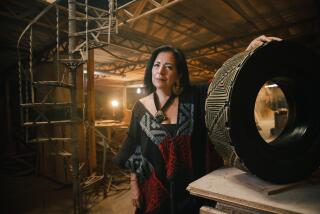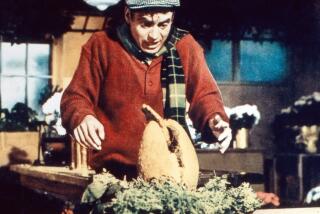All roads to horror lead back to ‘Night’ creator
- Share via
NEW YORK — George A. Romero made one of history’s three (or four) greatest horror films with “Night of the Living Dead” (1968). He’s also made at least two (or three) others on his own terms that are almost as good, if not on a par with that masterly nightmare.
Yet Romero’s name doesn’t come up nearly as often as it should in discussions of influential American filmmakers of the 20th century’s last half. Never mind that handmade horror movies, from 1974’s “The Texas Chain Saw Massacre” to 1999’s “The Blair Witch Project,” can trace their lineage directly to Romero’s incomparable “Night.” He’s still one of those “Oh, right, him!” kind of guys whose introduction into routine movie chat can impress a room full of savants -- unless, of course, those savants aren’t partial to exploding skulls, severed limbs and zombie love.
Part of the problem is that Romero’s best work has been fashioned way beyond both the studio system and the boundaries of whatever defines good taste for the week. Although born in the Bronx, Romero has devotedly spent most of his professional life in Pittsburgh, where “Night of the Living Dead” was filmed on a budget of $70,000. He’s among the original, unreconstructed independent directors, finding creative release, social commentary and human possibility in the rougher neighborhoods of pop culture. Someone should take special notice of the man and his work.
Someone is. Beginning Saturday and running through Jan. 26, the American Museum of the Moving Image here will present a three-weekend retrospective of Romero’s films. Fresh 35-millimeter prints of “Night of the Living Dead” and “Martin,” Romero’s ingenious 1978 spin on the vampire genre, will be screened the first day, and the 62-year-old Romero will be on hand for a discussion of his career and to introduce a screening of Michael Powell and Emeric Pressburger’s bizarre 1951 version of “The Tales of Hoffmann, which Romero calls his favorite film.
One hopes that Romero will also talk about the impact that EC horror comics of the 1950s had on his life’s path. Those notorious “funny books,” which took a bum rap from moralizers for causing juvenile delinquency, were fuel for dozens of writers, artists, actors and filmmakers old enough to have been “harmed” by their effects.
Little wonder that when Romero got around to making “Night of the Living Dead,” he had internalized EC’s brash, subversive attitude toward genre conventions to the point that he thought nothing of making a black man (the late Duane Jones) the only sane human being among a houseful of desperate idiots battling flesh-eating zombies. Back then, such a hero was unusual for any film. To some extent, it still is.
The jolting violence and savage imagery were also unusual back in the late 1960s. But “Night of the Living Dead” has endured well beyond its gory, gaudy progeny because, as with other monumental horror films, it seems dreamed into existence rather than slapped together with shrieks and gratuitous shocks.
The satire was more pronounced in “Dawn of the Dead” (1978), Romero’s sequel to “Night” in which a motley group of survivors hunkers down in a shopping mall, getting into all the goodies while waves of brainless zombies lay siege.
I’m also partial to “Creepshow” (1982), the EC-inspired pastiche Romero assembled with help from Stephen King. (King also plays a mountain man afflicted with run-amok vegetation.) Here, as elsewhere in his oeuvre, Romero proves that most of what we think of as scary movies are little more than slapstick comedy tuned to a higher pitch at faster speeds.
“Knightriders,” his 1981 road adventure of modern-day motorcyclists as itinerant jousters, is a seeming change of pace that finds its own level of horror in fast-buck opportunism. Two more recent films, “Monkey Shines” (1988) and “The Dark Half” (1993), show Romero pushing gothic themes into deeper levels of inquiry into human values.
There’s a whole lot more to Romero -- and to his corner of history -- than the movie-chat crowd would have you believe.
*
Gene Seymour is a film critic at Newsday, a Tribune company.
More to Read
Only good movies
Get the Indie Focus newsletter, Mark Olsen's weekly guide to the world of cinema.
You may occasionally receive promotional content from the Los Angeles Times.










